
As ever, a reminder of raw specifications and imaging features:
| Surface Duo 2 (2021) | Apple 12 Pro Max (2020) |
|
12 MP, f/1.7, dual pixel PDAF, OIS TOF 3D (depth) |
12 MP, f/1.6, dual pixel PDAF, sensor-shift OIS TOF 3D LiDAR scanner (depth)
|
On paper then, somewhat amazingly, the Surface Duo 2, on which the cameras seem rather 'added on', matches up pretty well to the established iPhone imaging powerhouse, with the slightly weaker telephoto the only significant difference. In terms of hardware, at least - the iPhone's camera software is faster and smoother, plus the night mode is more sophisticated, as we may well see below.
Yes, the newer iPhone 3 Pro range ramps things up slightly again, but I didn't have that to hand, plus the improvements are incremental at best.
As usual on this site, most photos were taken on full auto and handheld, as a regular user would do. No tripods or RAW editing sessions needed!
Let's pit the results against each other, using our Famed Interactive Comparator (FIC). All 1:1 crops are at 900x500 for comparison, though I've put up the originals, for you to download if you want to do your own analysis.
Note that the interactive comparator below uses javascript and does need to load each pair of images. Please be patient while this page loads, if you see a pair of images above each other than you've either not waited long enough or your browser isn't capable enough! You ideally need a powerful, large-screened tablet or a proper laptop or desktop. This comparator may not work in some browsers. Sorry about that.On Windows 10 Mobile, use the 'AAWP Universal' UWP app, which handles the comparator very competently (see the tips in the app's help screens) |
Test 1: Sunny landscape
My local church, in weak winter sun in the UK. Here's the scene, for context:

You can grab the original photos from the Surface Duo 2 and iPhone 12 Pro Max for your own analysis.
1:1 crops then, from the Surface Duo 2 and then the iPhone, just wait to make sure the page has fully loaded and then use your mouse or trackpad pointer to compare the images:
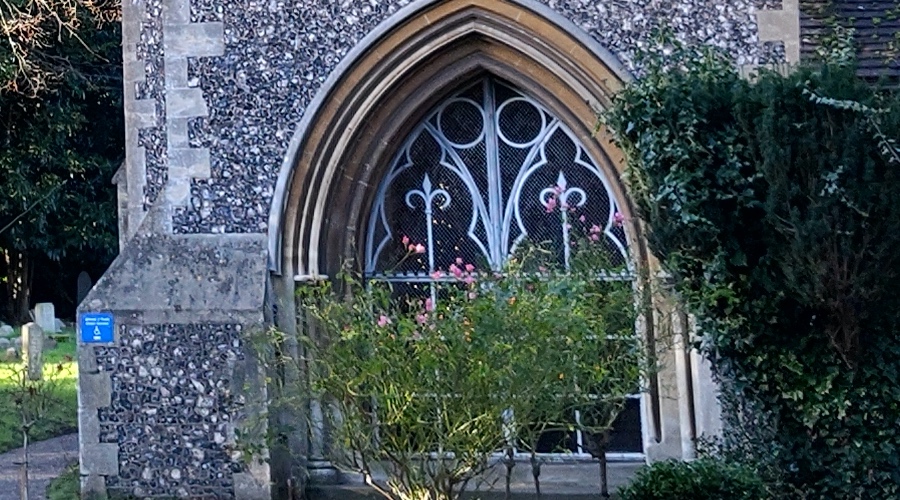
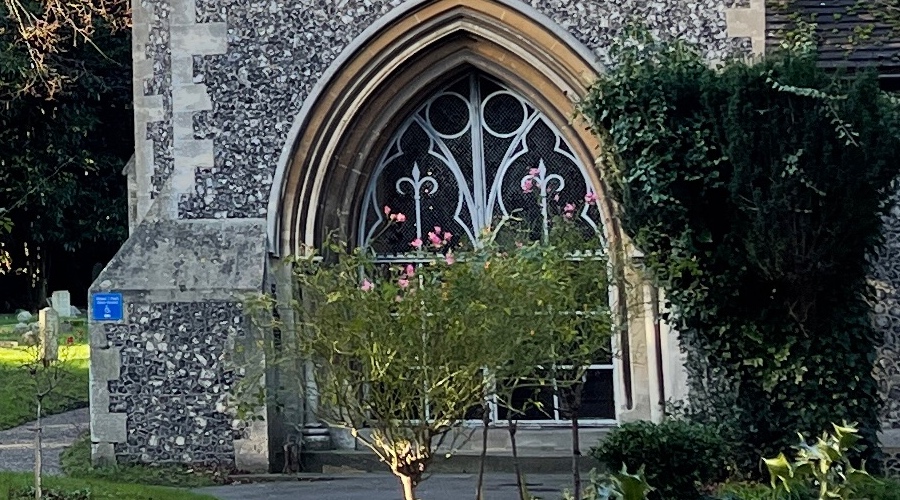
Both shots are excellent, as you'd expect, with detail right on the edge of what's possible from phone-sized camera sensors. Note that this is all with the iPhone in default shooting mode and not 'ProRAW' - the latter can produce results with slightly less edge enhancement, but is quite a bit of work to export in this purer form, plus Apple have managed to get the default JPGs and ProRAW HEIC files much closer in recent updates, so there's not much gain to be had in the end.
Surface Duo 2: 10 pts; iPhone 12 Pro Max: 10 pts
Test 2: Sunny landscape, zoomed
The same scene, but zooming in on the tree to the left of the church. Zoom is in the 2x telephoto on the Duo 2 and 2.5x on the iPhone's equivalent, so the field of view of the zoomed shots is slightly different.
You can grab the original photos from the Surface Duo 2 and iPhone 12 Pro Max for your own analysis.
1:1 crops then, from the zoomed shots from the Surface Duo 2 and then the iPhone, just wait to make sure the page has fully loaded and then use your mouse or trackpad pointer to compare the images:
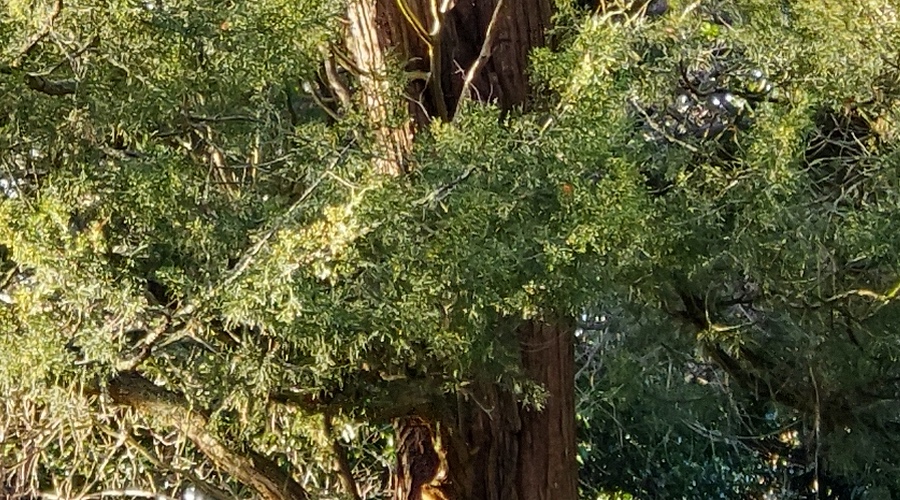
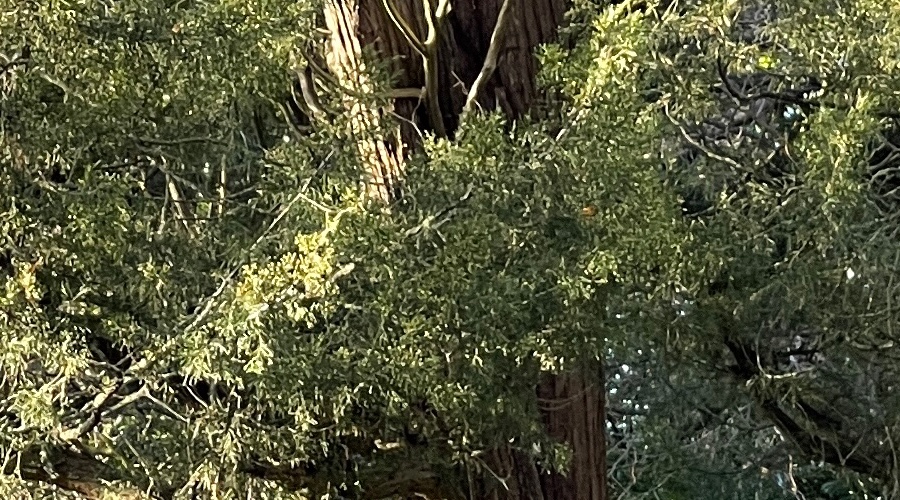
A slight and surprising win for the Duo 2 here, with perfect colour and detail, while the processing degrades the iPhone shot for both aspects, at least down here at the pixel level - you wouldn't notice when viewing the photos full-screen, etc. Which, again, is why I look so closely, to see how pure photos really are.
Surface Duo 2: 10 pts; iPhone 12 Pro Max: 9 pts
Test 3: Ultra-wide HDR
Down at the aviation museum, shooting this large Handley Herald into a sunny sky, why not test the ultra-wide lenses of each and HDR routines at the same time?
You can grab the original photos from the Surface Duo 2 and iPhone 12 Pro Max for your own analysis.
Scaled shots for the web, from the Surface Duo 2 and then the iPhone, just wait to make sure the page has fully loaded and then use your mouse or trackpad pointer to compare the images:
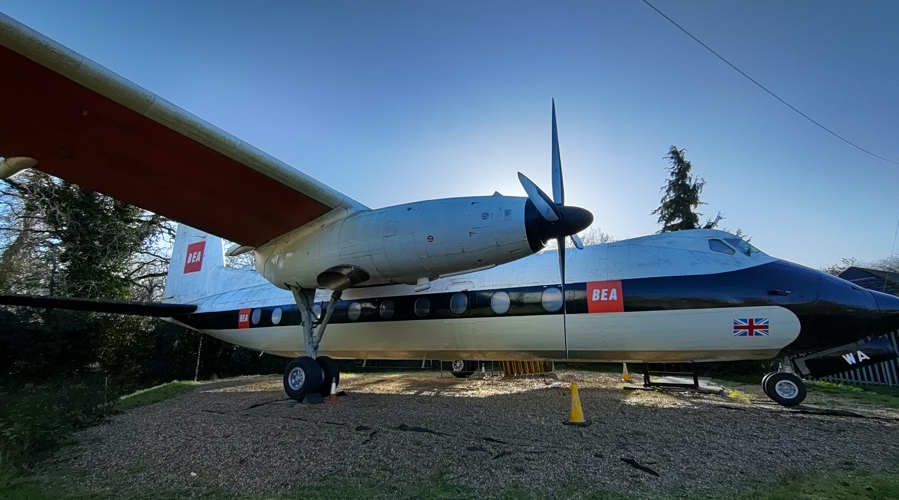
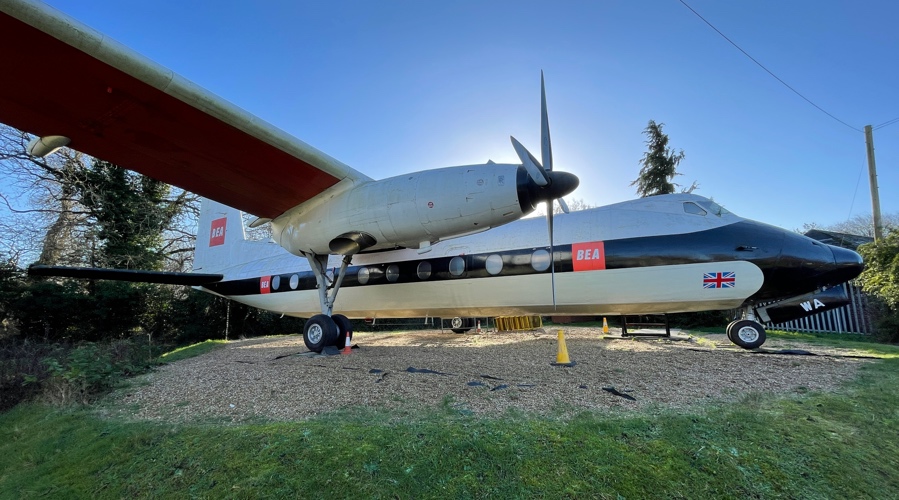
Both terrific photos again - the iPhone tries to go hyper-real in its HDR, so shadows are almost completely eliminated and colours are heightened, for which kudos, but you could argue that it goes too far and that the Duo 2's rendition is more accurate and believable. I'm not going to split hairs though, full marks to each.
Surface Duo 2: 10 pts; iPhone 12 Pro Max: 10 pts
Test 4: The Rolls Royce of zoom
On the plane engines, high up, was the Rolls Royce logo, which I'd never spotted before. Perfect use case for using the telephotos again. Here's the scene, for context:
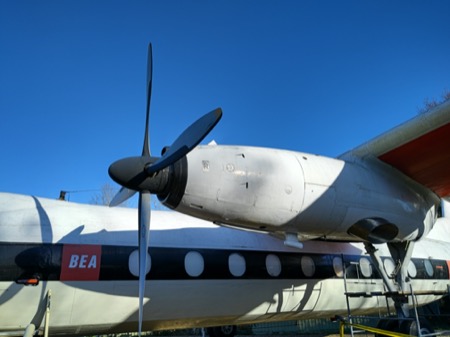
You can grab the original photos from the Surface Duo 2 and iPhone 12 Pro Max for your own analysis.
1:1 crops then, from the Surface Duo 2 and then the iPhone, just wait to make sure the page has fully loaded and then use your mouse or trackpad pointer to compare the images:
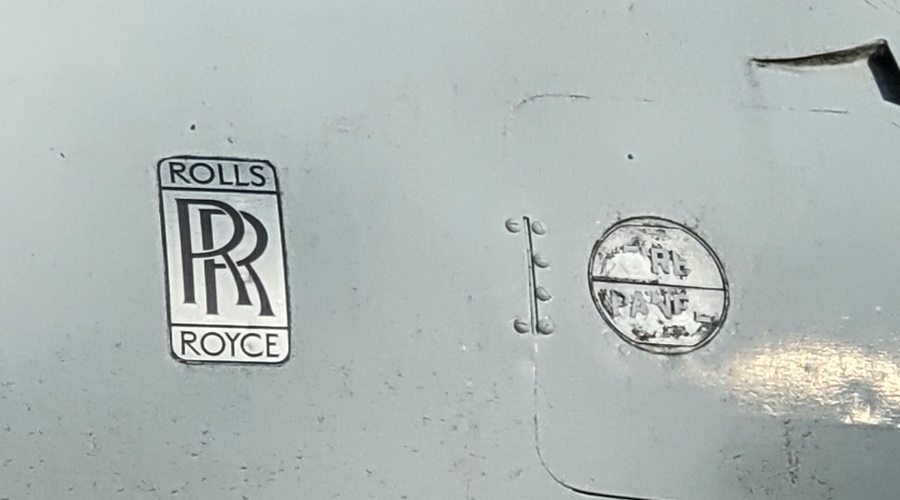
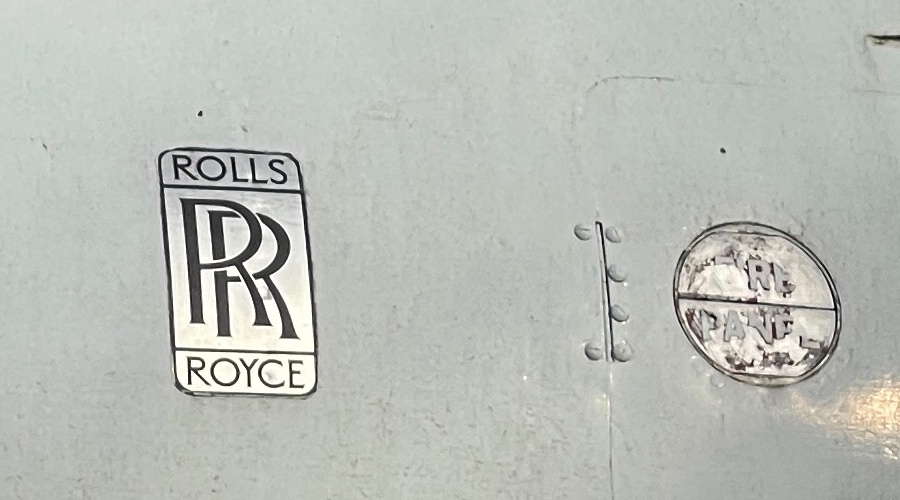
As you might expect, the extra 0.5x zoom factor in the iPhone gives slightly more detail, though the Duo 2 does very well too, and with less artificial edge enhancement. But a point between the two photos, certainly.
Surface Duo 2: 9 pts; iPhone 12 Pro Max: 10 pts
Test 5: Cockpit detail
A favourite test shot of mine, partly because it's aviation cool, inside the Herald cockpit, partly because of the sheer amount of detail, lit only indirectly. A super test of a phone camera. Here's the scene, for context:

You can grab the original photos from the Surface Duo 2 and iPhone 12 Pro Max for your own analysis.
1:1 crops then, from the Surface Duo 2 and then the iPhone, just wait to make sure the page has fully loaded and then use your mouse or trackpad pointer to compare the images:

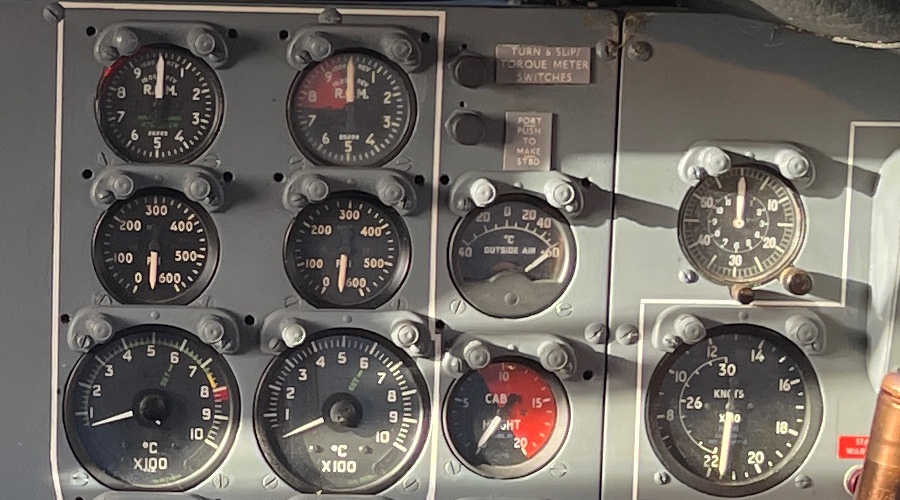
Both photos are super, but you can see above that there's a bit more clarity in the Duo 2's result. Perhaps it's using more edge enhancement? Which I normally don't like, but whatever it's doing, it works superbly here. Maybe less noise reduction? Yes, I'm pixel peeping in the extreme, but the Duo 2 deserves an extra point here, I think,
Surface Duo 2: 10 pts; iPhone 12 Pro Max: 9 pts
Test 6: Natural detail
One more sunny landscape before we take things indoors. Down by a local lake. Here's the scene, for context:
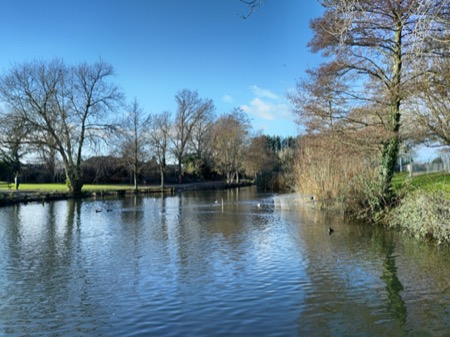
You can grab the original photos from the Surface Duo 2 and iPhone 12 Pro Max for your own analysis.
1:1 crops then, from the Surface Duo 2 and then the iPhone, just wait to make sure the page has fully loaded and then use your mouse or trackpad pointer to compare the images:
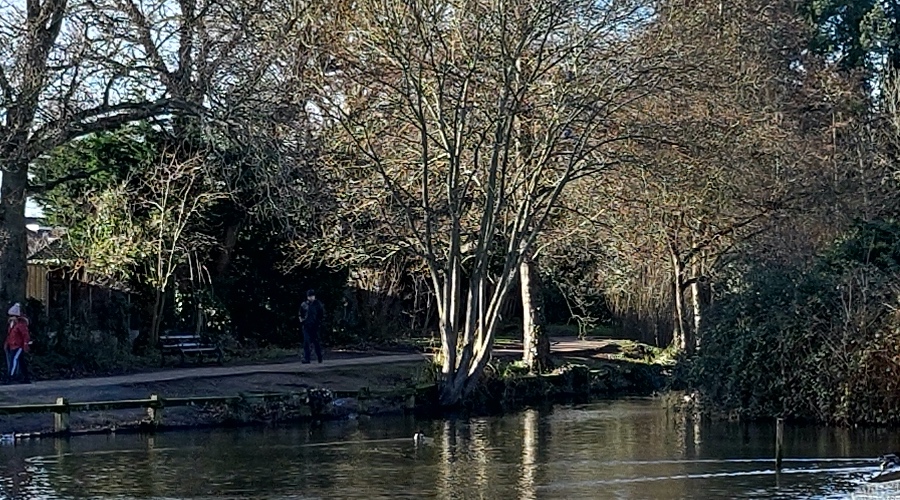
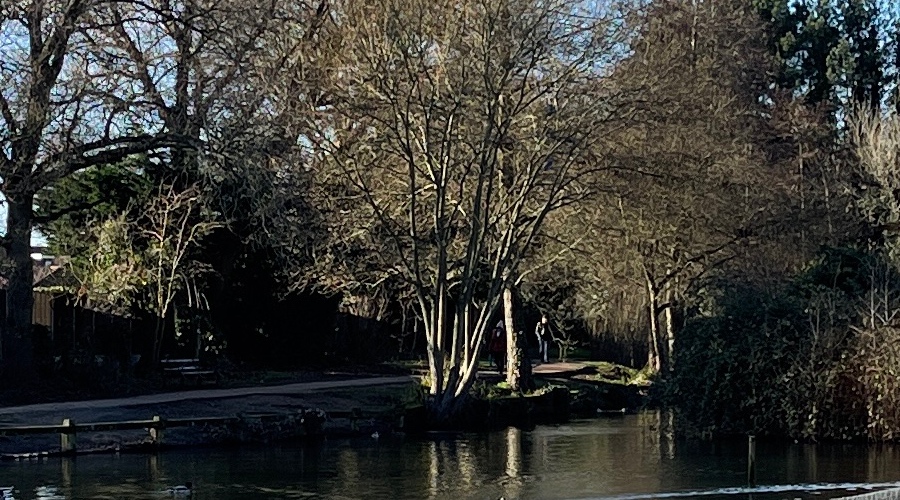
Impressively, the Duo 2's camera pulls out more detail in the shadows than the iPhone, without seeming too artificial in terms of HDR. The bench, left of crop, is a good indication of this. Plus natural detail - the trees and shrubs - seems, if anything, better in the Duo 2's shot, here down at the pixel level, where things can often be a mess with lesser phone cameras.
Surface Duo 2: 10 pts; iPhone 12 Pro Max: 9 pts
Test 7: Indoor close-up
At the aviation museum again, shooting this super biplane model at very close range (up against the glass).
You can grab the original photos from the Surface Duo 2 and iPhone 12 Pro Max for your own analysis.
Scaled shots for the web, from the Surface Duo 2 and then the iPhone, just wait to make sure the page has fully loaded and then use your mouse or trackpad pointer to compare the images:


Obviously depth of field means that not everything can be in focus at the same time, but still, just look at the detail and colours in the Duo 2 shot. The prop and the engine cowling, just superb. I'm starting to realise the answer to my titular question - not only do you not have to compromise on imaging in choosing the Duo 2, you might actually get better photos a lot of the time. Surprising.
Surface Duo 2: 10 pts; iPhone 12 Pro Max: 9 pts
Test 8: Indoor colour
Another close-up, almost a macro, shooting these colourful goblets at under 10cm:
You can grab the original photos from the Surface Duo 2 and iPhone 12 Pro Max for your own analysis.
Scaled shots for the web, from the Surface Duo 2 and then the iPhone, just wait to make sure the page has fully loaded and then use your mouse or trackpad pointer to compare the images:

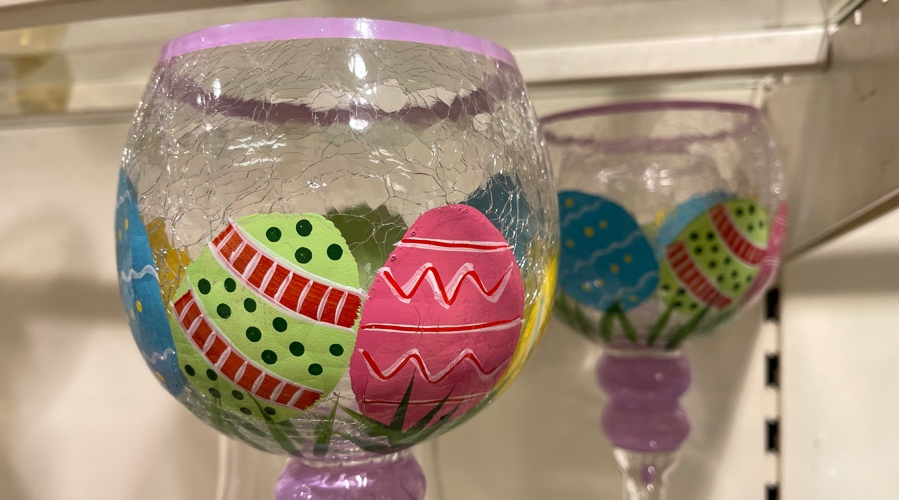
Exactly reversing the verdict from the biplane test - and why I gather so many data points from each phone camera - here the iPhone brings out more life and colour. Which is not to say that the Duo 2 shot isn't near perfect and couldn't be enhanced in a one-click photo editor, but the iPhone's shot is perfect right out of the camera.
Surface Duo 2: 9 pts; iPhone 12 Pro Max: 10 pts
Test 9: Night time
A local tower block (on the site of an old biscuit factory!) that's part built, part occupied. Here's the scene, for context:
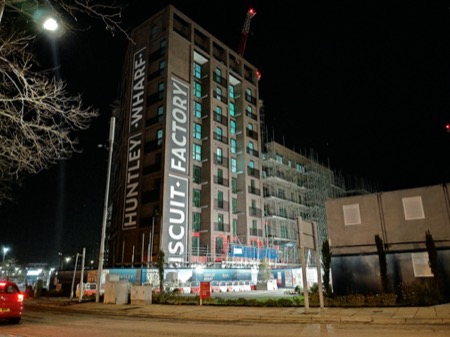
You can grab the original photos from the Surface Duo 2 and iPhone 12 Pro Max for your own analysis.
1:1 crops then, from the Surface Duo 2 and then the iPhone, just wait to make sure the page has fully loaded and then use your mouse or trackpad pointer to compare the images:
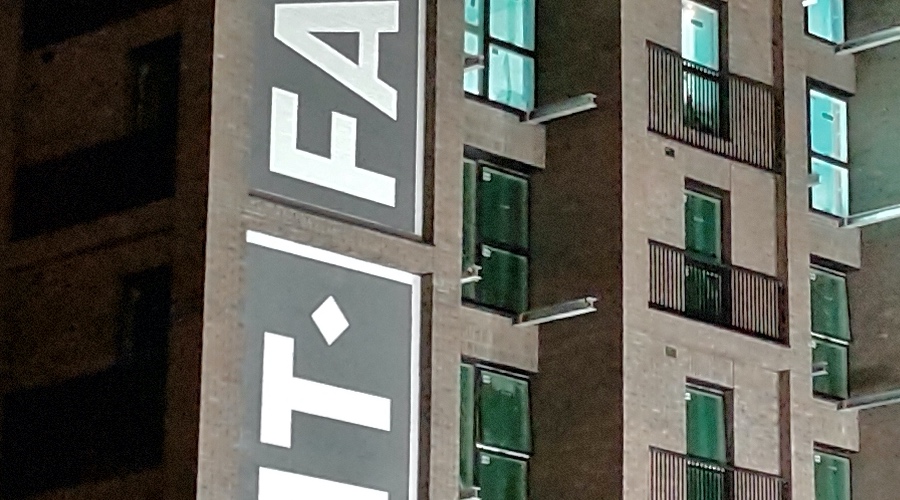

There's lots of interest here, with both phones switching automatically to a 'night' mode, i.e. using multi-second, multiple captures and then combining them to a clearer night shot, as we've come to expect. The Duo 2 does pretty well in terms of alignment and crispness (and remember that this is all at the pixel-level in a 12MP shot), but the iPhone's night algorithms are just stunning. The detail, right down to individual bricks, is excellent - perhaps on the verge of overdoing it (hence the single point margin only), but still a notch up from the Duo 2's already good photo.
PS. You can get similar results from the Duo 2 if you go down the GCam port route - follow Shane Craig on Twitter if you want more on this, as he's done lots of playing.
Surface Duo 2: 9 pts; iPhone 12 Pro Max: 10 pts
Test 10: Night time, take 2
An almost empty car park at night, with typical light levels for a scene someone might want to snap. Here's the scene, for context:
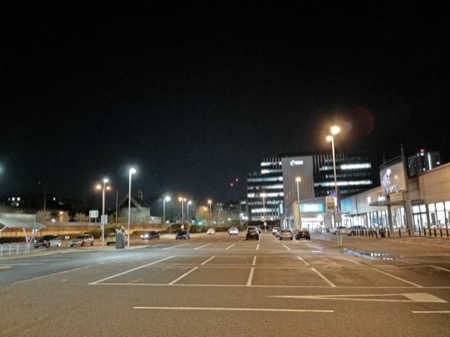
You can grab the original photos from the Surface Duo 2 and iPhone 12 Pro Max for your own analysis.
1:1 crops then, from the Surface Duo 2 and then the iPhone, just wait to make sure the page has fully loaded and then use your mouse or trackpad pointer to compare the images:
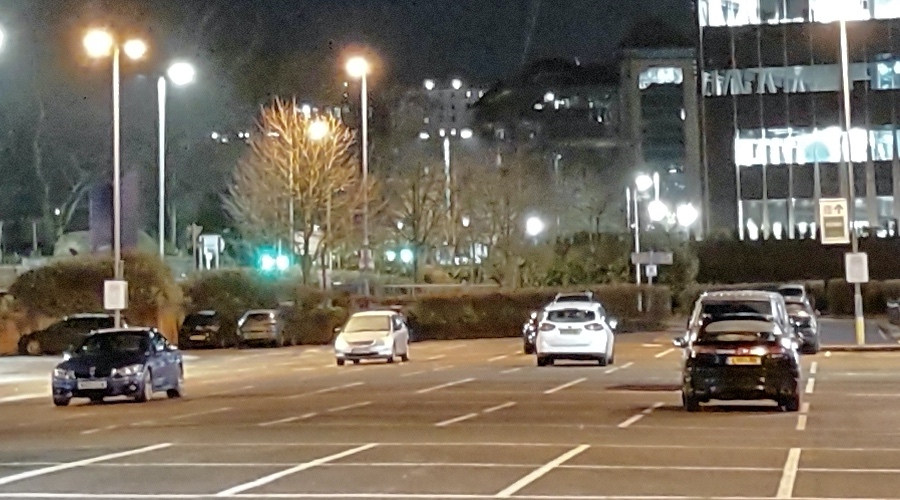
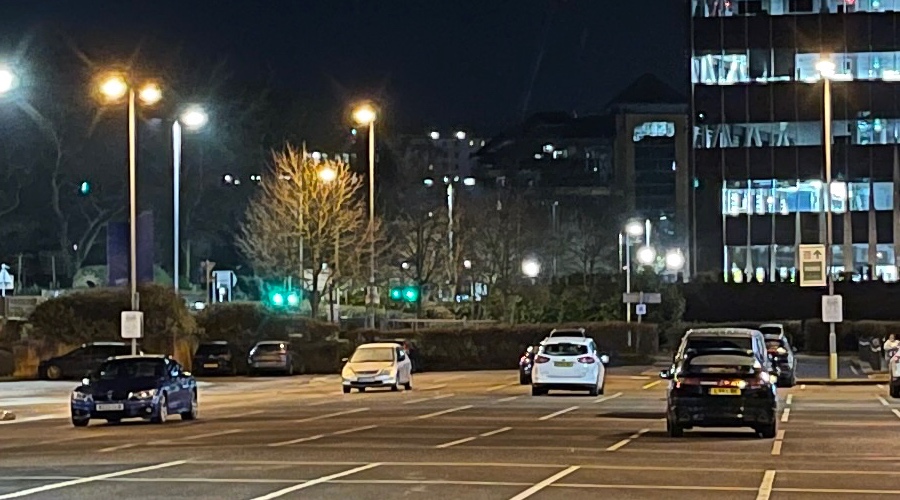
This is a tough one to judge, since the iPhone's shot is clearly more edge-enhanced - but then it also has less noise and greater contrast. So, for example, in the office block on the right of the crop, you can see inside the rooms rather than them being blown out. The Duo 2 could clearly do with a few tweaks to its night mode algorithms, but it's still doing rather well, I think.
Surface Duo 2: 9 pts; iPhone 12 Pro Max: 10 pts
Test 11: Night time, zoomed
The same scene, but zoomed using the telephotos on one of the shop entrances. You can grab the original photos from the Surface Duo 2 and iPhone 12 Pro Max for your own analysis.
1:1 crops then, from the Surface Duo 2 and then the iPhone, just wait to make sure the page has fully loaded and then use your mouse or trackpad pointer to compare the images:
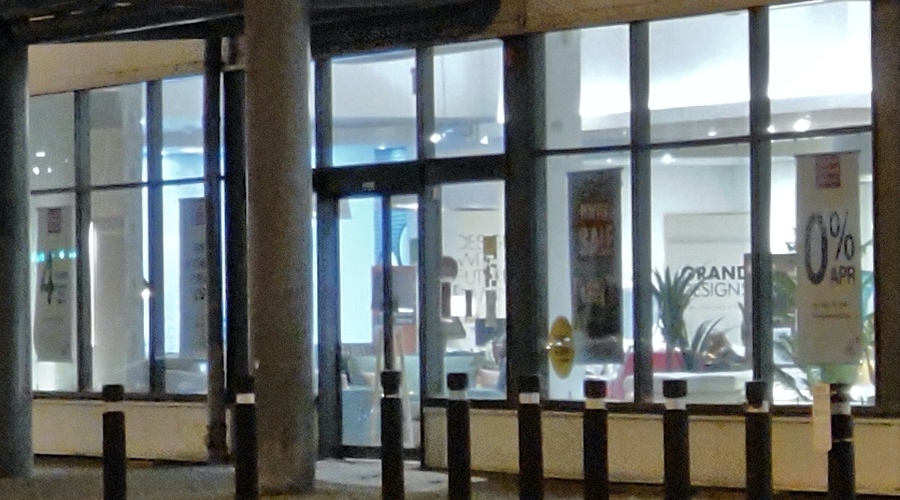
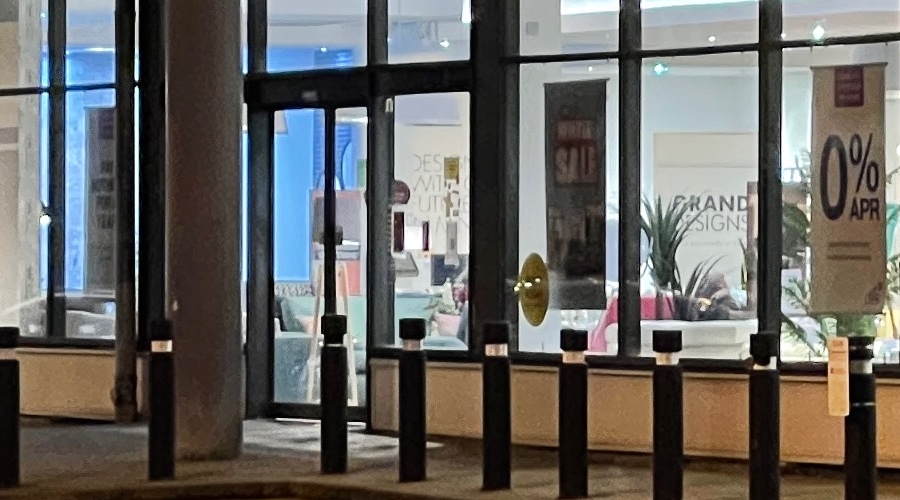
Again the iPhone's night mode is simply better than the Duo 2's, and by a point, but add in the 2.5x telephoto instead of 2x, and I'm going to award the iPhone two points over the Surface for the first time in this feature. Which, again, isn't to say the Duo 2's telephoto is bad at night, but the recent iPhones are just stellar in low light and that needs to be scored.
Surface Duo 2: 8 pts; iPhone 12 Pro Max: 10 pts
Scores on the doors
For the record, the scores add up as:
- iPhone 12 Pro Max (2020): 106 pts (/110)
- Surface Duo 2 (2021): 104 pts
The big surprise here is not that a recent iPhone 'Pro' flagship won in an imaging test across all three cameras, but that the Surface Duo 2, for which cameras are seen as something of an afterthought (in design and software), performs far beyond what you might think. In good light conditions I'd put it up against almost anything in the phone world (extreme zoom excepted), and it's only in low light that it starts to fail a little (plus the viewfinder can slow down) - but even that is all fixable in software updates.
So, to answer my own question at the start. There's almost zero compromise in imaging quality when picking the Surface Duo 2 over a competing solution. Where you will have to compromise a little is in how you take photos with it, since the Duo 2 has to be at least half 'open', so that you can see the viewfinder on the right hand screen. This takes getting used to and is obviously not as convenient when snapping on a cold and damp evening (as I was). But get over this slight hurdle and you'll be more than pleased with the images the Duo 2 takes.
